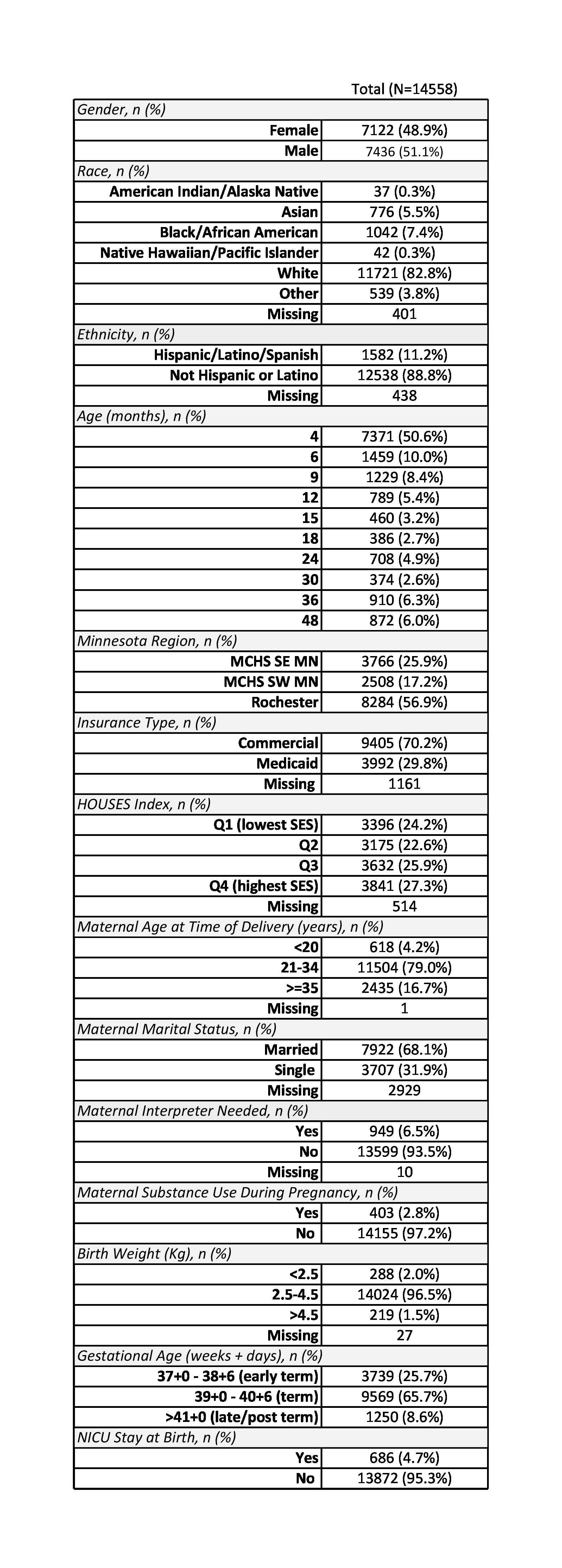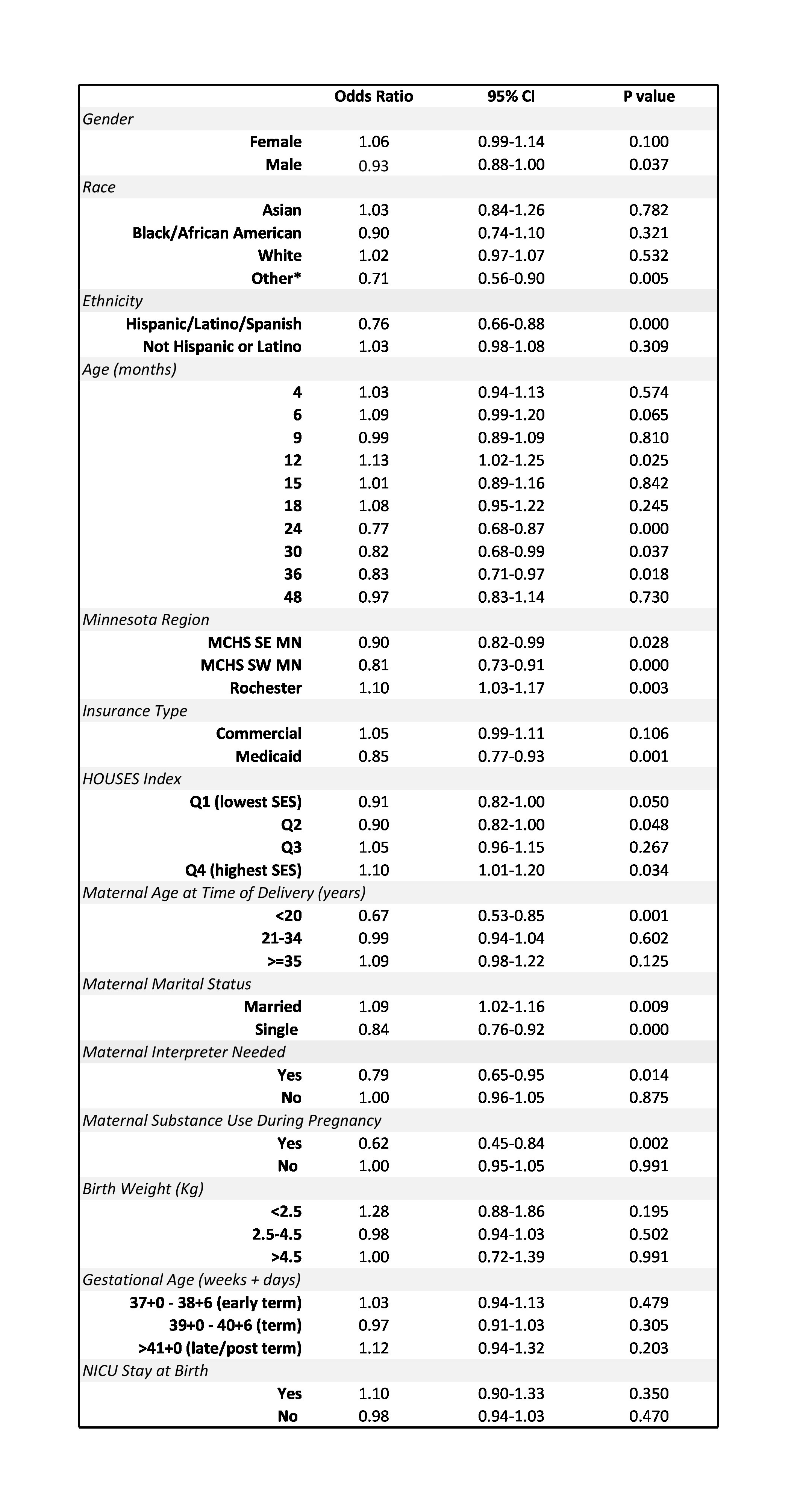Developmental and Behavioral Pediatrics: Screening & Assessment
Developmental and Behavioral Pediatrics 3
403 - A Retrospective Cohort Study Analyzing the Changes in Early Childhood Development during the COVID-19 Pandemic
Publication Number: 403.206
- SR
Sahar Romem, MD (she/her/hers)
Pediatric Hospital Medicine Fellow
Mayo Clinic Children's Center
Rochester, Minnesota, United States
Presenting Author(s)
Background: The COVID-19 pandemic has had a negative impact on mental health and social determinants of health. There is a gap in knowledge regarding the impact of the pandemic on early childhood development (ECD).
Objective: To investigate ECD outcomes in different subgroups before and after the COVID-19 pandemic.
Design/Methods:
A retrospective cohort study of children 3-58 months of age whose caregivers completed a Survey of Well-being of Young Children (SWYC) as a part of a well child visit. The data were divided into two phases: pre-pandemic (September 2018 – February 2020), and during pandemic (September 2020 – February 2022). The difference in the proportion of forms with Meets Expectations interpreted scores on the SWYC Developmental Milestones pre-pandemic versus during the pandemic timeframe overall and among subgroups were reported. Subgroups included gender, race, ethnicity, age of well child check (WCC), birth weight, gestational age, NICU admission at birth, maternal factors, and socioeconomic status (SES) defined by the HOUSES Index (an individual-level housing based validated SES measure) with higher quartile representing higher SES status. Hypotheses were tested using logistic regression with repeated measures.
Results: 14,550 patients were included in the sample for analysis with 52,558 SWYC form observations. There was no difference in the odds of a Meets Expectations interpreted score before and after the pandemic for the entire sample, OR 0.99 (95% CI: 0.94-1.04). There was evidence of increased odds of an interpreted score of Meets Expectations during the pandemic for the following subgroups: age 12 months at WCC, 4th HOUSES Quartile (highest SES), and 2 parent household. There was evidence of decreased odds of an interpreted score of Meets Expectations for the following subgroups: male, Hispanic/Latino ethnicity, ages of 24, 30 or 36 months at WCC, Medicaid insurance, 2nd HOUSES Quartile, requiring interpreter, single parent household, young maternal age, maternal substance abuse, and race identified as Native Hawaiian/Pacific Islander, American Indian/Native Alaskan or Other (Table 2).
Conclusion(s): Decreased odds of meeting developmental milestones during the pandemic were evident in certain high risk sub-groups, including lower SES. Although there was no evidence for a difference in odds of meeting developmental milestones before and during the pandemic overall, this study reveals unequal distribution of suboptimal developmental outcomes within our population during the pandemic that may be exacerbating existing inequities impacting development in children.

